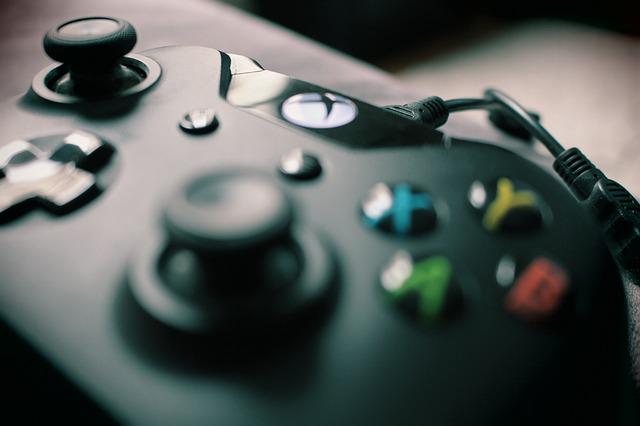We use Screenshots for anything from sharing winning gaming news to reporting a bug or finding a solution to a device-related issue on any website. Anything and anything that we deem relevant or useful for some future day is welcome. We do our best to protect it by taking screenshots whenever possible.
A three-finger swipe down the screen is all we need to do to take a screenshot on a mobile phone, making this process a lot easier. The PC version is a tad trickier. To take a screenshot, all you have to do is touch the F2 key, which is the default shortcut.

What is the Steam Screenshot Folder?
The Steam Screenshot Folder is a designated location on your computer where all screenshots taken within games purchased and played through Steam are automatically stored.
This feature allows gamers to capture memorable or important moments in their gaming sessions, which can be easily accessed, managed, and shared.
Read Also:
- Free Softwares
- Lou Gehrig Day Remembering The Iron Horse
- Kyrie Irving Makes Orlando Magics Bad Day Worse
Why are Steam Screenshots Important?
1. Capture Gaming Moments
- Screenshots let players capture epic wins, game glitches, high scores, and memorable in-game events.
2. Share Experiences
- Gamers often share these screenshots with friends or the gaming community, enhancing social interaction.
3. Create a Gaming Portfolio
- Over time, these screenshots can serve as a personal gaming portfolio, showcasing achievements and experiences.
Access Steam Screenshot Folder
Finding the photo that was shot is still a challenge. Only if you know where to look can you find a picture.
A game platform like Steam exists. You can take screenshots at any point while playing, although it’s possible that you won’t find it here. There are two ways to access the snapshot: via screenshot manager or physically by opening the screenshot folder.
1. A Screenshot Manager
Using the screenshot manager, you may view all of the images/screenshots that were taken in the game.
These steps will allow you to access this screenshot:
Step 1: Start by opening your steam window. When you hover your cursor over the VIEW, you’ll see a list of options in the upper left, next to the other dropdowns.
Step 2: Then, select the screenshots option under VIEW. A image can be uploaded to Steam or other social media network. It’s also possible to access it directly from your hard drive by selecting [Show on disc]. Even if you don’t want to save your screenshots, you can erase them here.
2. Opening The Screen Folder Manually
Step 1: The screenshots that players take while playing games are literally preserved in a folder for each of them. This screenshots folder is located in the same place as the current Steam installation.
Step 2: In this case, local disc C serves as the default location. Start a text editor and type: steam.userdata.yourSteamID> 760 remote.app – ID> – C: Program Files (x86): Steam. screenshots.
Here are some locations for different operating systems where you can access your screenshot folders if you need to:
The screenshots folder on Mac OS X: *Username*: *Library/Application Support/Steam*
Documentation/screenshots/linux: ~/.local/share/Steam
Method 2 requires that you know your Steam ID to access the screenshot. Your Steam ID can be found by launching the Stream Client and performing the following steps:
Step 1: Open the Steam Client first. The next step is to hit the VIEW button and select Settings.
Step 2: Go back to the main interface and make sure that the box labelled “Display steam URL address when available” is checked and saved. Next, go to your Steam profile and click on View profile to see your entire profile.
Step 3: The number at the end of the URL is STEAMID, which is the unique identifier for your Steam account.
Now that you’ve got this down pat, go back up and find your screenshots using this method. Additionally, steam folders can now be stored in a variety of locations across a variety of operating systems, including macOS, Linux, and others.
On a Mac, How Do I Locate the Steam Screenshots Folder?
Step 1: Only the location of the installation directory is different between Mac and Windows; the rest of the steps stay the same.
Users/username/Library/Application Support/Steam is the default location on a MAC.
Step 2: Please use your Mac’s user name instead of your steam one as the username in this field. To find a certain game, enter its ID into the user folder search box. Now you may follow the “screenshots” and collect them all in one spot.
Enter your gameid> folder after finding your user folder in the user data directory. Once you’ve done that, click on the images.
Managing Steam Screenshots
1. Taking Screenshots
- Default shortcut for taking screenshots in Steam is the F12 key, which can be customized.
2. Viewing and Organizing
- Screenshots can be viewed and organized within the Steam client, allowing users to delete or sort them.
3. Uploading to Steam Community
- Users can upload screenshots to their Steam profile or the Steam Community, with options to add captions and tags.
Sharing and Using Screenshots
1. Sharing on Social Media
- Steam provides options to share screenshots directly to social platforms like Facebook and Twitter.
2. Using in Guides and Reviews
- Screenshots can be used in game guides, reviews, and discussions within the Steam Community.
3. Personal Use
- Many gamers use screenshots as desktop wallpapers or for personal collection.
Troubleshooting Common Issues
Sometimes users might face issues with the Steam Screenshot Folder, such as screenshots not appearing or folder accessibility issues.
1. Ensuring Steam Overlay is Enabled
- For screenshots to work, the Steam Overlay must be enabled in the Steam settings.
2. Checking File Path
- Ensure the default screenshot folder path hasn’t been changed in Steam settings.
3. Disk Space and Permissions
- Verify there is sufficient disk space and that you have the necessary permissions to access the folder.
Read Also:
- Antivirus Software
- Default Gateway is Not Available
- Rafael Nadal Beats Denis Shapovalov Amid Charge of Favoritism
Conclusion
Finally, the Steam platform is a fantastic gaming platform with all the bells and whistles needed to keep gamers engaged. All you need to know about finding screenshots can be found in this article. When using Windows 10, macOS, or Linux, we hope this post was helpful in identifying your Steam screenshots folder and getting to the images.


